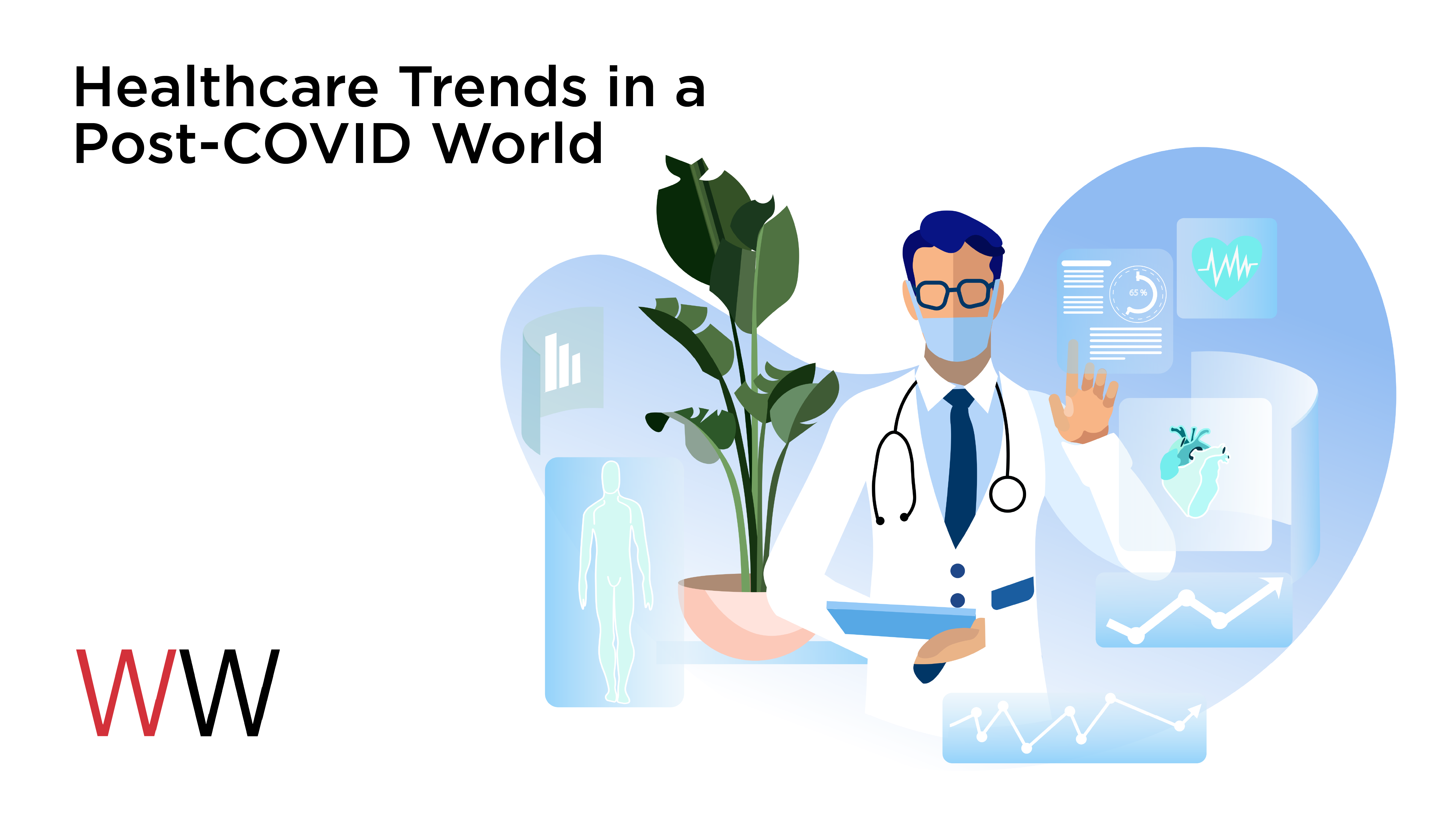By: Glaelis Sierra – Director of Client Services
It’s been over a year now that COVID-19 was declared a global pandemic. During that time, we’ve had to learn how to adapt to a completely virtual world. We’ve seen virtual weddings, baby showers, happy hours and birthdays, among many other things. Also, working from home, which used to be a nice perk to have for some people, has now become a staple in many companies.
The world has truly turned upside down over the past 15 months, but with the vaccination rollout, we’re slowly going back to “normal”. States have been lifting restrictions as we go into the summer months and we’re even seeing concerts/events back on schedule. It’s definitely an exciting time to be able to hug your friends and family members and even travel again.
By the end of June 2021, about 63% of all vaccine-eligible Americans — those 12 and older — have received at least one dose, and 54% are fully vaccinated, according to the CDC. However, vaccine hesitancy is still an issue in several areas of the U.S. Many Americans are planning to “wait and see”, but the truth is that the majority of COVID-related deaths have happened to unvaccinated people, according to a report from KHOU.
For most of us, this was the first time going through a global pandemic. Healthcare has been top of mind during the entire time, so what has changed since then? What trends emerged after COVID-19?
Here are the top 10 healthcare trends in a post-COVID world:
1. 57% of adults surveyed worldwide, report being more concerned about their immunity as a result of COVID-19. According to a report from Healthline Media, medicine cabinets may look slightly different in a post-COVID world. They are expected to reflect a combination of holistic and traditional over-the-counter (OTC) formulas for both proactive and reactive care.
Consumers are becoming more conscious about enhancing their immunity, after the pandemic, and it is expected to have an unprecedented demand for established immunity-boosting products because of the rising importance of preventive healthcare in the minds of consumers, according to The Business Research Company.
2. Vitamin, mineral and supplement sales have risen 21% since the pandemic began with market shares of certain types of vitamins and supplements increasing exponentially, says market research firm IRI. Healthline Media reports that there has been a 15% increase in vitamin purchases by U.S.-based millennials.
3. There has been a 242% increase in global search interest for beneficial spices and herbs such as astragalus root, cinnamon and ginger says a report. Wellness has become a lifestyle and this includes cooking and adding supplements to already established routines.
4. Convenience is king. Since stay-at-home orders were in place, there has been an increase in the delivery of everything, including prescriptions and groceries. The prescription delivery market is projected to grow by 18.4%, according to the report from Healthline Media.
5. 44% increase in online purchase intent for OTC medicine. The increase in online shopping is not going anywhere and this includes OTC meds. Some are hesitant to visit crowded stores or pharmacies and have reaped the benefits of delivery.
6. 70% of U.S. adults are actively looking for ways to reduce stress, says a report. The pandemic certainly took a toll on everyone’s mental health while being confined for so long. By December 2020, 42% of all Americans reported depression or anxiety symptoms, compared to just 11% the previous year, according to an article from Medical Economics.
Online therapy platforms have seen a rise in demand over the past year. MDLive, a telehealth provider with more than 62 million members in the United States, informed their online therapy and psychiatric care services increased fivefold in 2020 compared with 2019.
One in four 18 to 24-year-olds said that they have thought about self-harm during the pandemic, and more than half reported at least one negative mental health symptom — such as depression or anxiety — in light of COVID-19, according to a study conducted by the Center for Disease Control.
Gen Z is experiencing “micro-losses”, which account for everything from graduation and prom cancellations, unstable job market, financial insecurity, and canceled internships, among other things. They went through all these losses in a lump sum and the impact can be devastating for their mental health.
7. Nearly 3 in 4 people say at-home workouts are here to stay, according to a survey. 78% of those polled said fitness has actually become more accessible to them, likely due to the ever-growing content on apps and social media by instructors and fitness brands alike. Others appreciate not feeling judged by those around them (43%), the flexibility of the hours they can work out (48%) and no more commuting to the gym (36%). Some said they feel more confident and willing to try new activities while working out from home.
8. Wearable tech adoption has been accelerated since COVID-19. Devices that can measure your heart rate, oxygen levels and even perform an ECG are in high demand since the pandemic started. Wearable tech like Fitbit and Apple Watch are helping users take precautions and be more informed about their health.
9. Telehealth is here to stay. The pandemic created an urgent need for telehealth to care for patients from the comfort of their homes. According to a study, the number of patients using telehealth increased from 11% in 2019 to 46% in 2020, with growth likely to continue.
10. Many employees would rather quit their jobs than return to the office. Already labeled as the “Great Resignation”, it is expected that, as many companies return to their offices, many employees will decide to resign. The pandemic has caused a lot of people to reevaluate their situation, particularly when it comes to working.
After spending more than a year at home, some don’t want to go back to commuting, preferring the flexibility of remote work at least a few days a week. Others are simply burned out from logging long hours while also balancing child care and remote school, sometimes all at once. And nearly all employees are ready to see what else is out there, according to a recent article from CNBC.
Overall, we can see a few themes that will stick around after the pandemic is well behind us. All themes go back to prioritizing wellness, mental health, eating better and taking supplements to boost immunity, and having a true work-life balance as work from home is now widely expected.
Healthcare and COVID-19 marketing are two of our areas of expertise. We’re continuously developing research and looking for insights to drive change through messaging and media planning. Contact us today.



